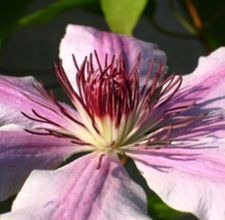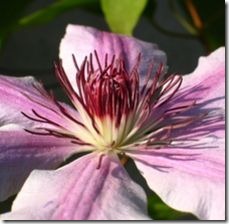When you run out of horizontal space in your garden, there is always room for clematis. The plant is a vine that is known to gardeners as the queen of the climbers. Clematis will grow well up trellises with very little training and produces large blossoms in a showy display.
Types
-
There are three basic types of clematis. These types are sorted based on when and how the plants bloom. The first group of clematis are known as early flowering plants. Early flowering clematis bloom in April or May from buds produced the previous year. The second group are known as large flowering clematis. Large flowering clematis bloom on short stems from the previous year’s growth. A second flush of blossoms may occur in late summer on new growth. The final group is called late-flowering clematis. Late-flowering clematis bloom from mid-June until fall on the current season’s growth. Clematis should not be fertilized while it is flowering.
Soil Test
-
Before planting clematis, have the soil tested. A soil test will indicate the nutrient level of soil as well as the pH. Clematis prefer well-drained, fertile soil and a pH around 7.0. Based on the results of a soil test, amend soil to improve the nutrient structure and pH prior to planting. The soil should be loosened to a depth of 12 inches and soil amendments should be dug into the soil at least two months before planting to give the amendments a chance to change the soil structure.
Mulch
-
Clematis prefer to grow with their vines in full sun. Despite this, they like their roots to be in a shady, cool environment. Growers typically underplant clematis with low-growing shrubs or ground cover. They may also be mulched with organic mulch or a top dressing of compost. Mulch will keep the soil above the roots cool and will improve the fertilization of the soil.
Fertilizer
-
Clematis do not need to be fertilized once they are established. But for the first year after they are planted while the roots of the vine are becoming established, they will develop quickly if given a general fertilizer such as as 15-5-5. The fertilizer may be applied at a rate of 1/2 pound per 50 square feet around the plant. Plants should be well-watered, but not overfed.


Deprecated: strpos(): Passing null to parameter #1 ($haystack) of type string is deprecated in /home/agriviek8Qv/agriviet.net/public_html/wp-includes/comment-template.php on line 2522